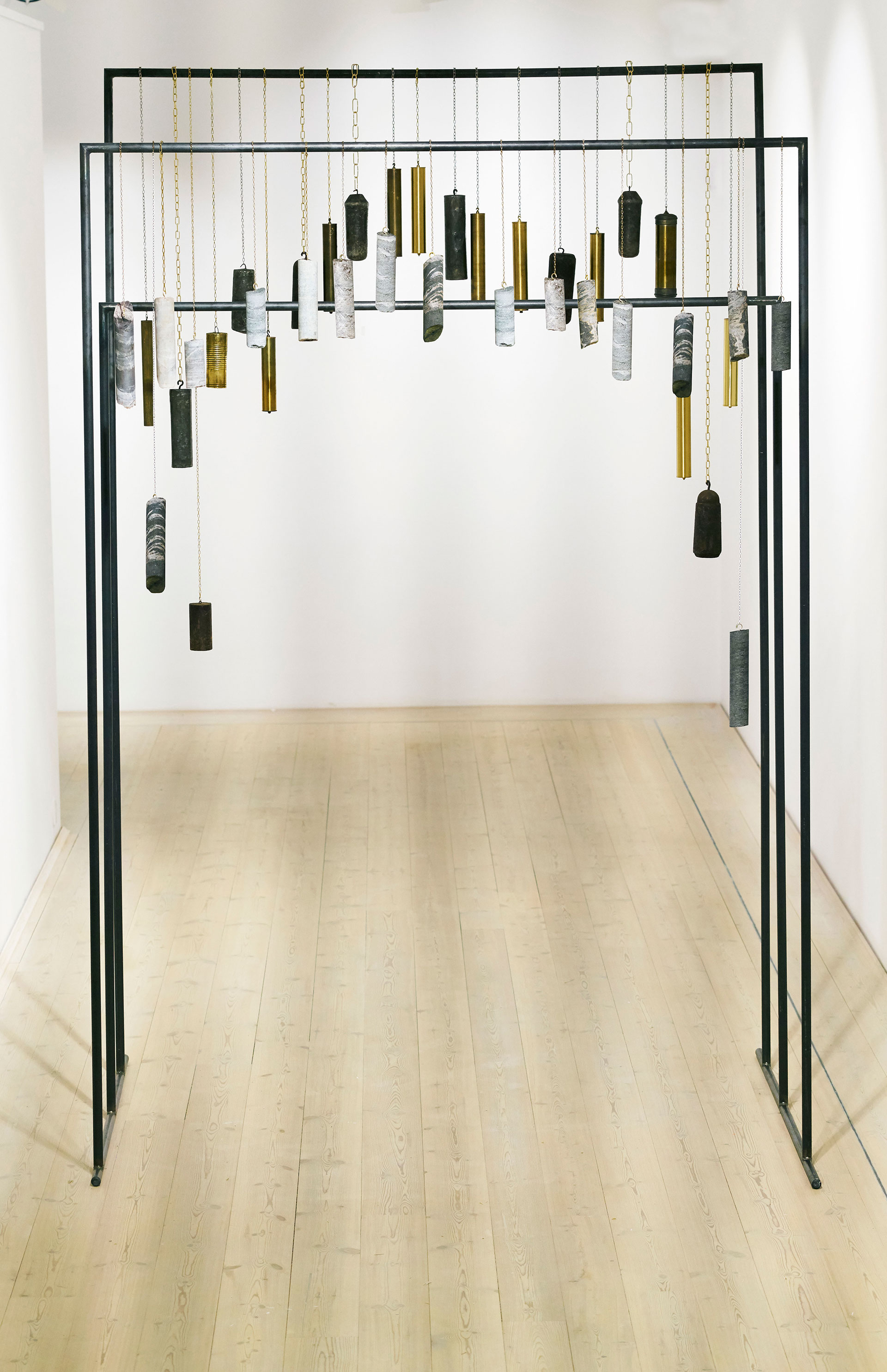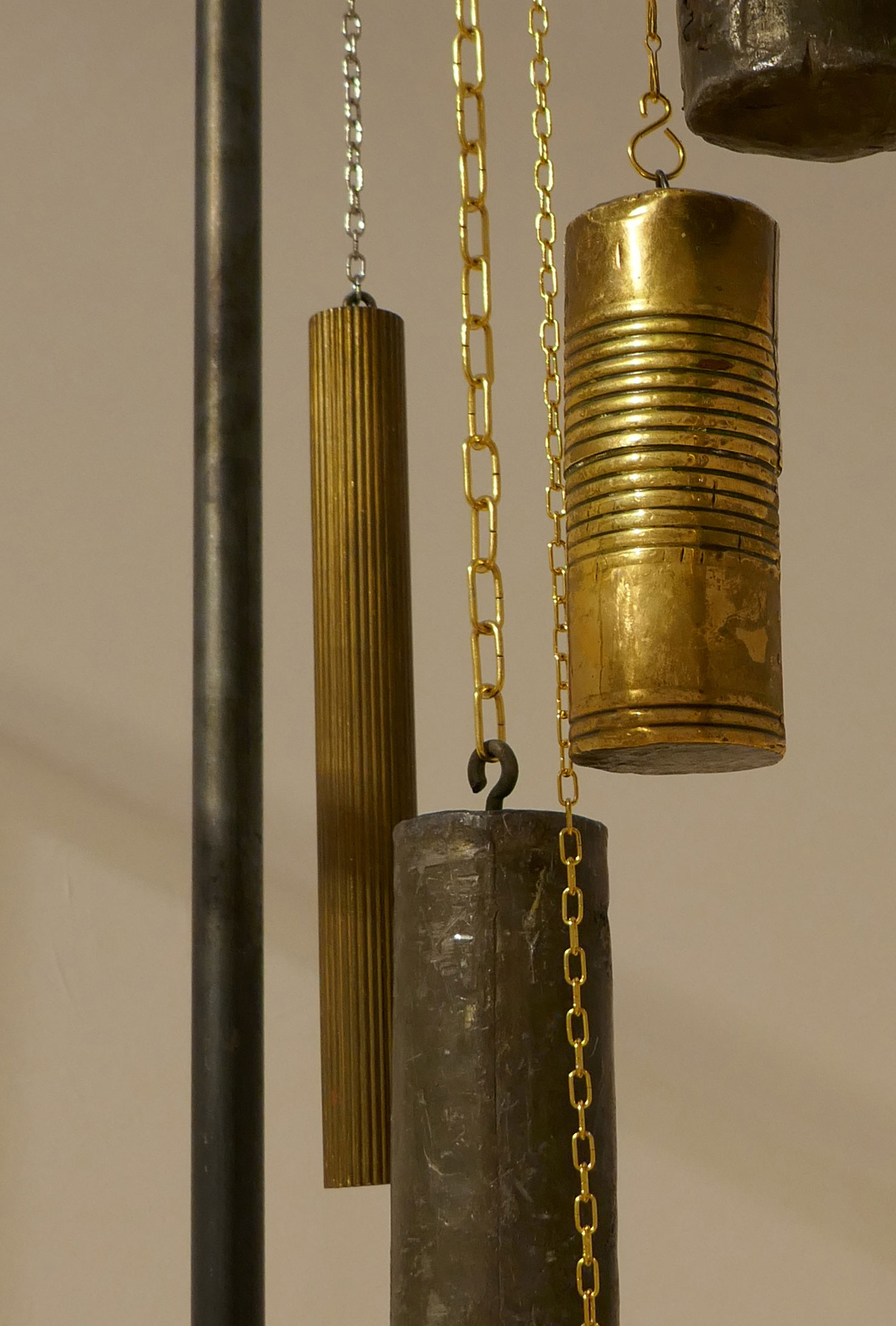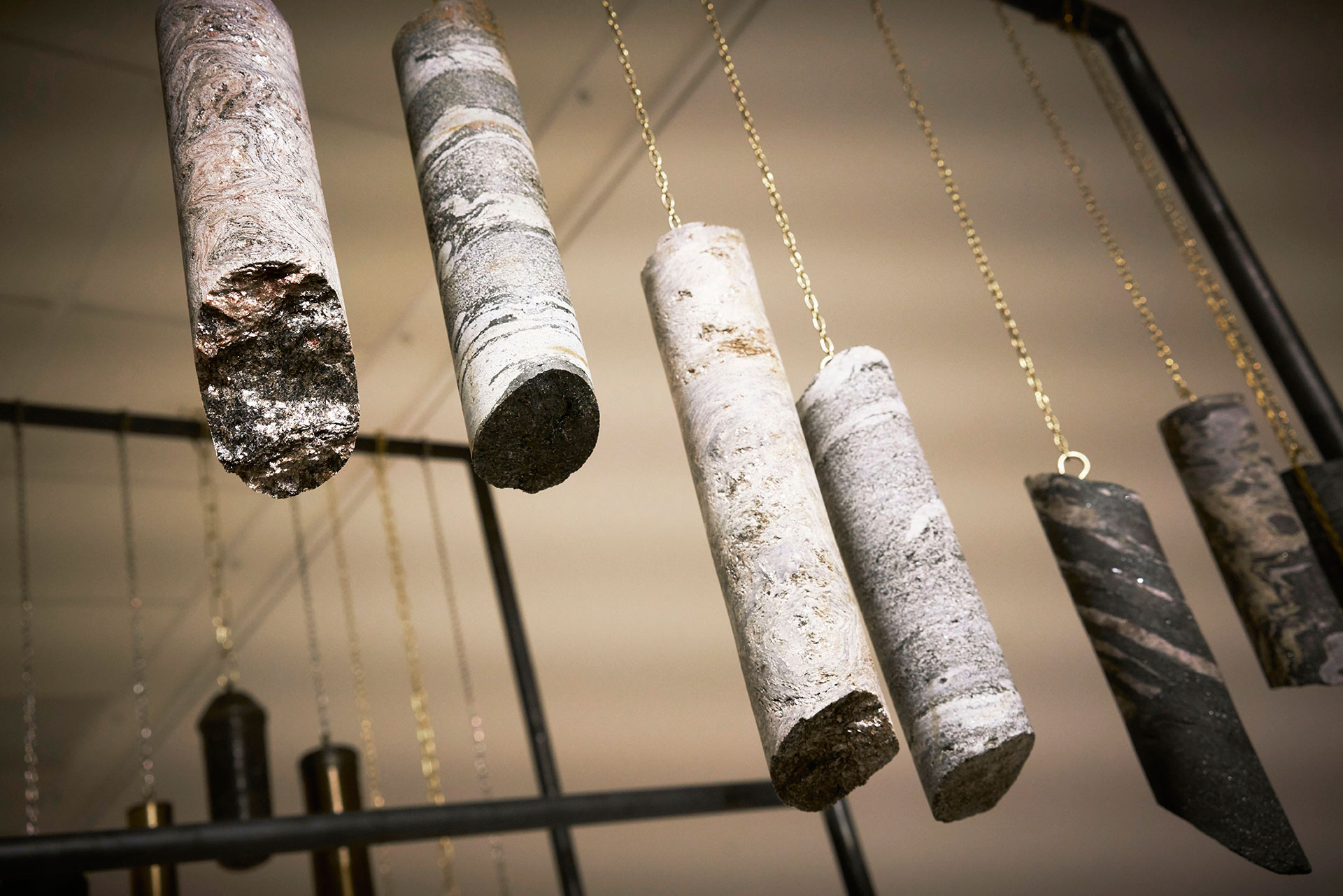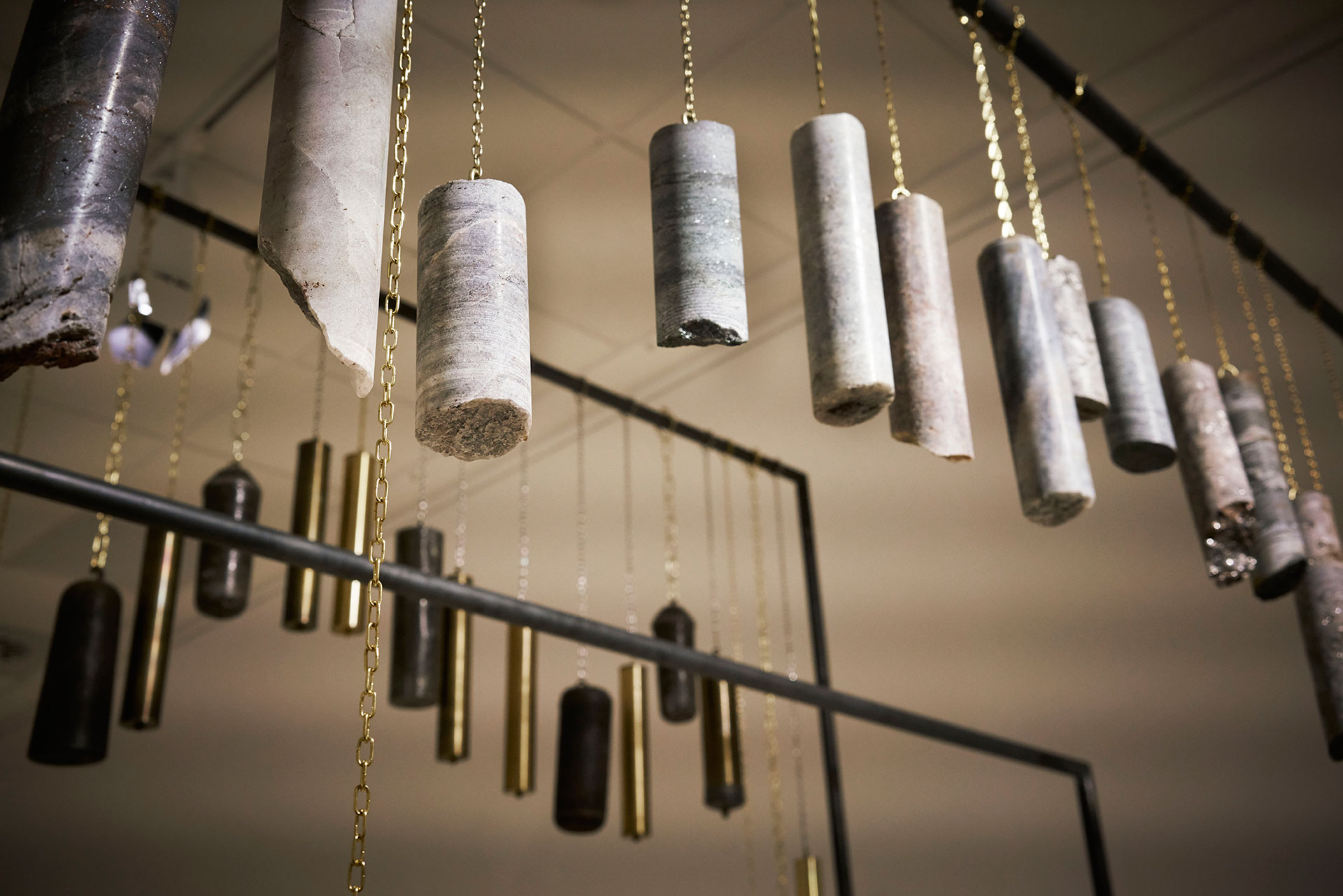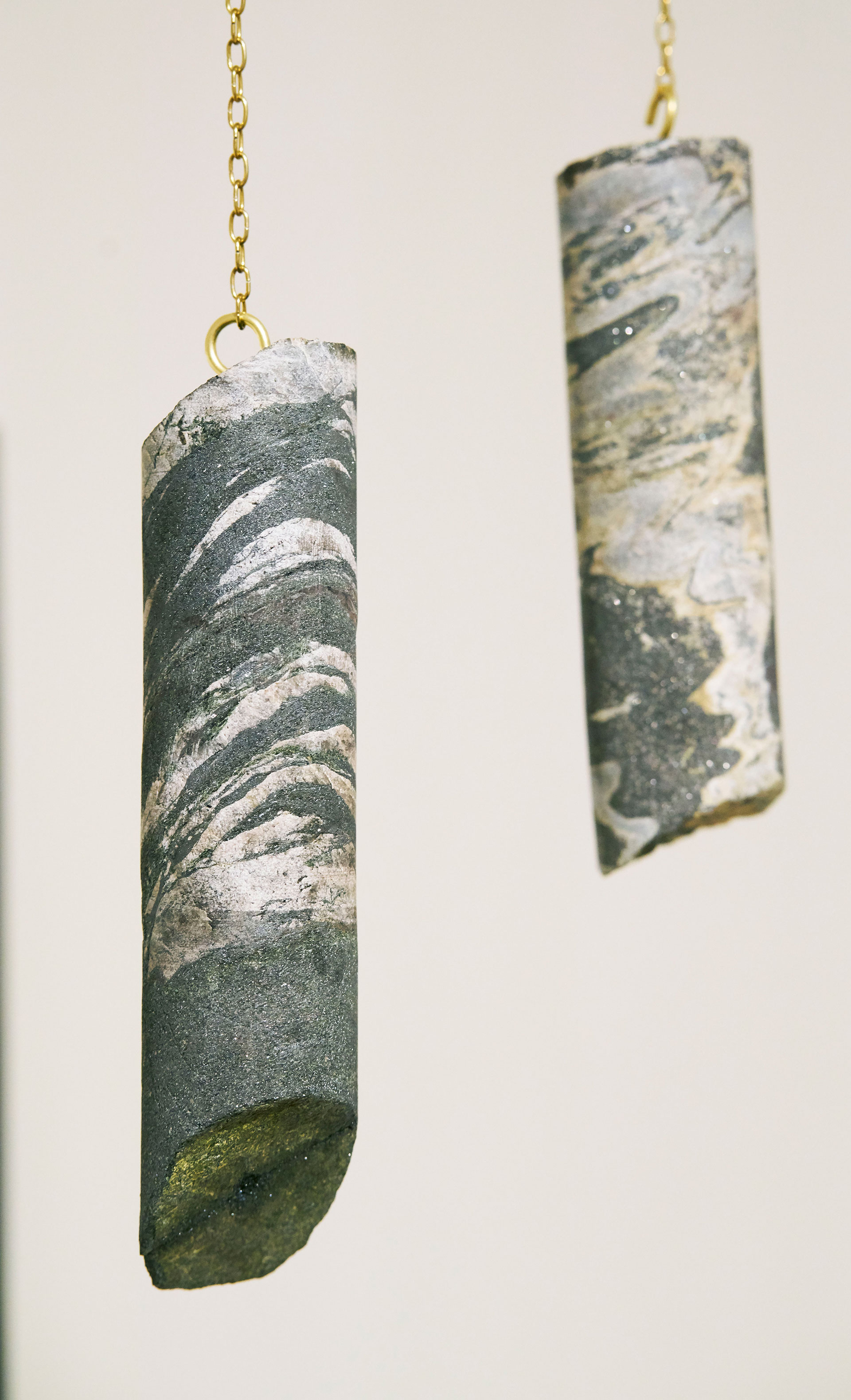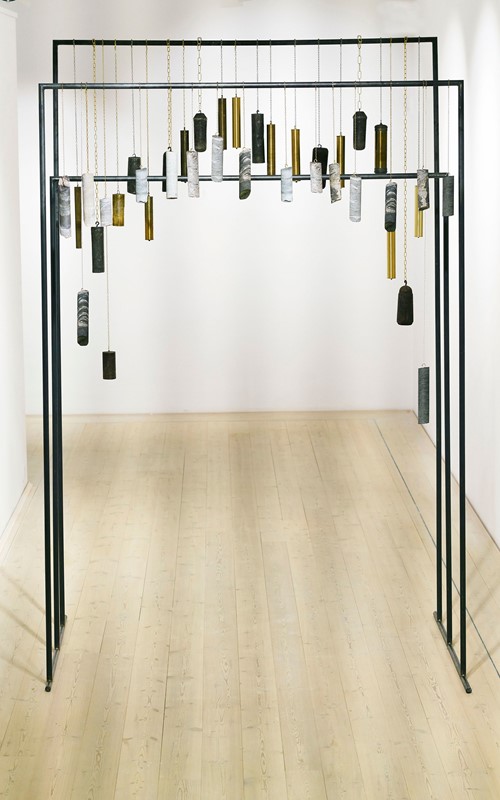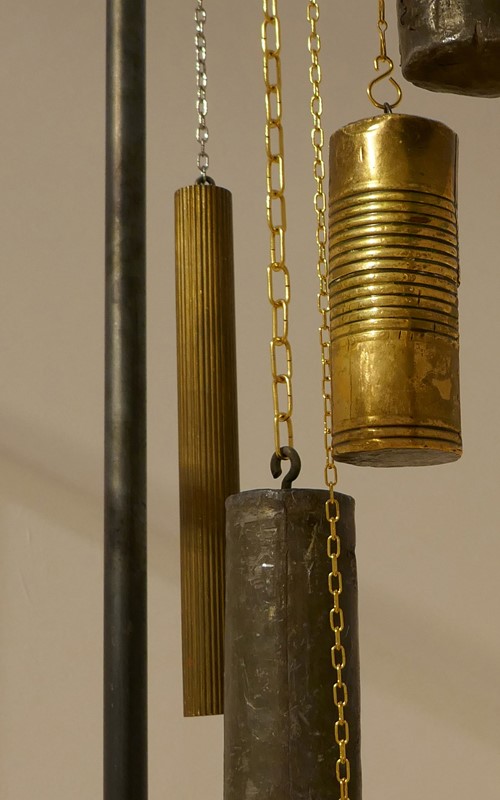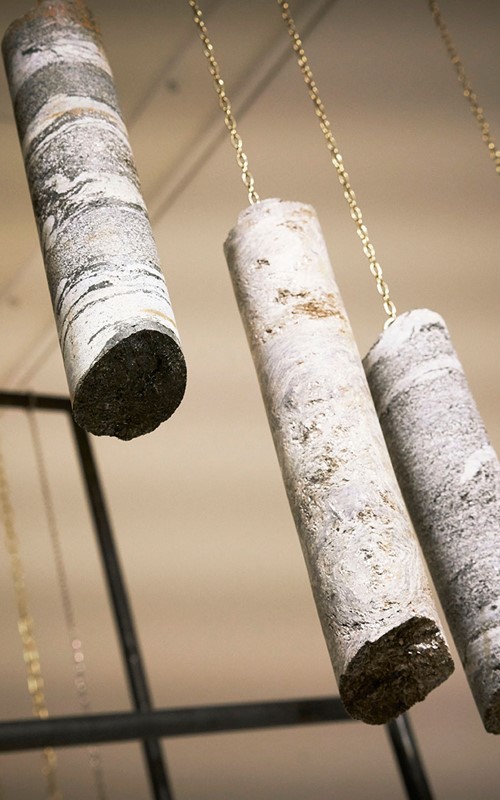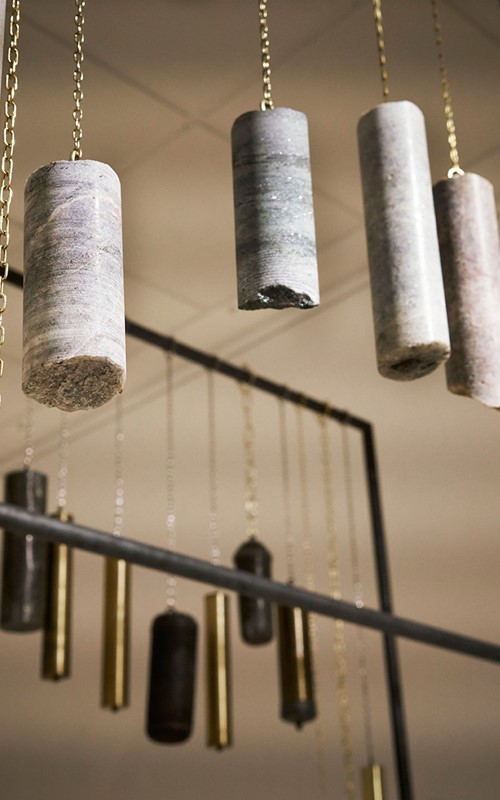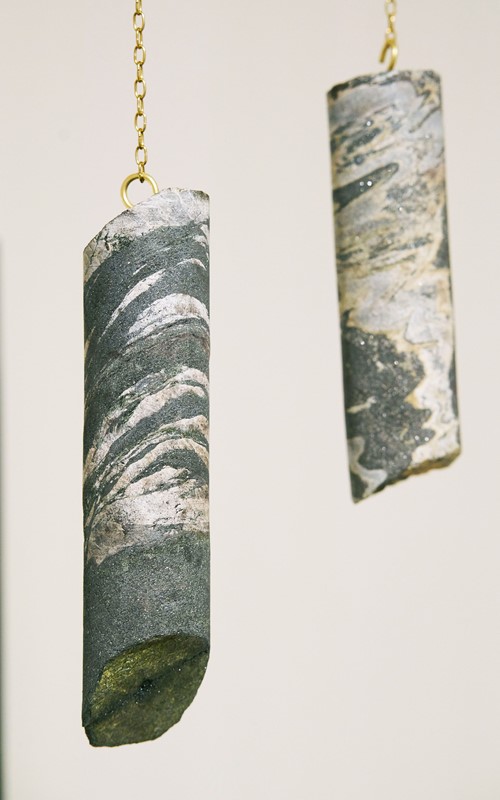Made in Time
Mille Kalsmose’s “Made in Time” presents itself as a powerful opening statement in the exhibition “The Shape of Us”. “Made in Time” meets the viewer as a sort of passage to another dimension or temporality that prevails as one walks underneath the tall metal structure, and into the exhibition. We are led through to a creative and artistic world where material structures elude both universal questions but also very much intimate issues.
Soft materials and rough elements meet the eye when you walk into the exhibition. There is a tension between the robust materials seen in the tall metal structure with heavy ironstones and brass pendulums hanging by thin and delicate golden chains that adds to the artwork certain lightness about it. As a continuous theme throughout the exhibition, this duality of materials refers to larger sociocultural concepts. The material is elevated both physically but also conceptually. “Made in Time”, as the title of the work also reveals, points to the concept of time; but far beyond the man-made concept of time. The artwork leads us through the metal gates and transports us into another time dimension beyond human origin.
The main structure of the work is a large-scale iron construction consisting of three gate-resembling openings of different heights. Heavy iron and brass pendulums from antique clocks as well as pendulum-imitating ironstones excavated from the underground are hanging above the viewers’ heads from gold chains of various lengths and thicknesses. The drill cores are all of columnar shape, hanging like notes in a composed sort of interplay with their own rhythm.
The warm, yellow color from the brass pendulums stand in contrast to the grey and blue hues in the ironstones. The processing of the ironstones reveals multilayered sediments with subtle traces of the iron molecules that exist within the natural structures of the stones irreversibly imprinted through time. They are materials created long before the origin of mankind, and perhaps will exist long after our time on earth. This underlines the artworks focus on time, both as a man-made concept, one we guide our daily lives by, but also something that marks nature in its own artistic way, showing the different ways mankind and nature are affected by the passing of time.
The exaltation of the material points towards a world beyond the mere materiality indicating a realm beyond what’s visible to the eye. As the viewer is crossing under the gate of “Made in Time”, a ritual transgression takes place, and a walk into unknown depths and undiscovered layers of consciousness begins.
